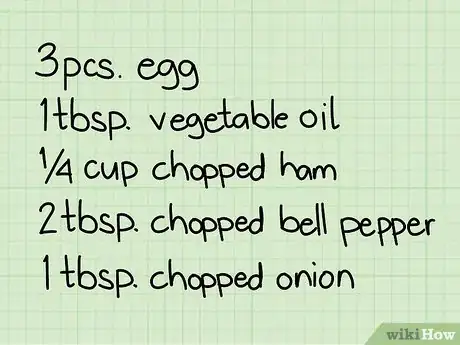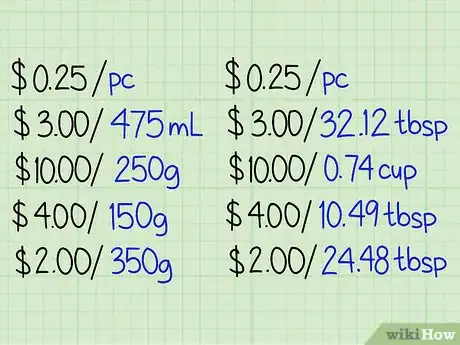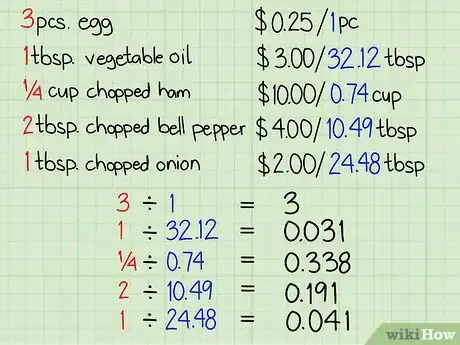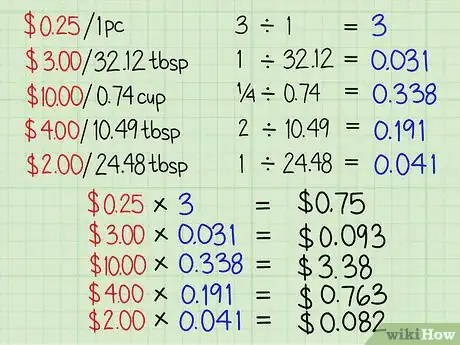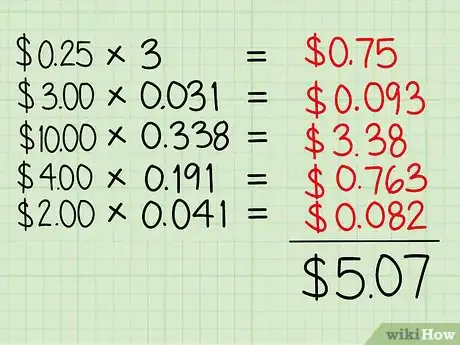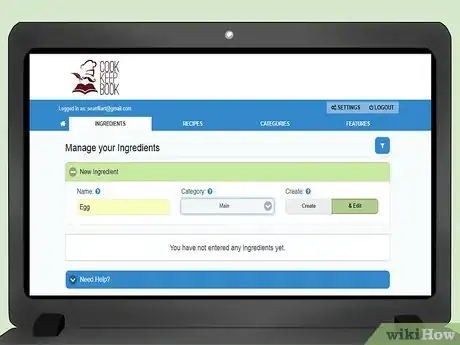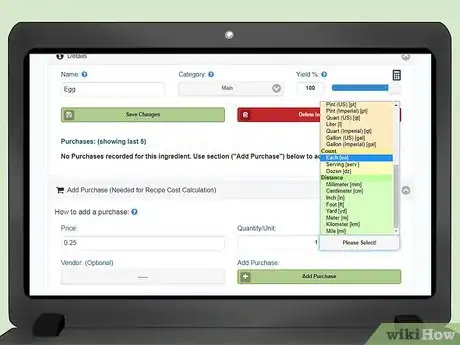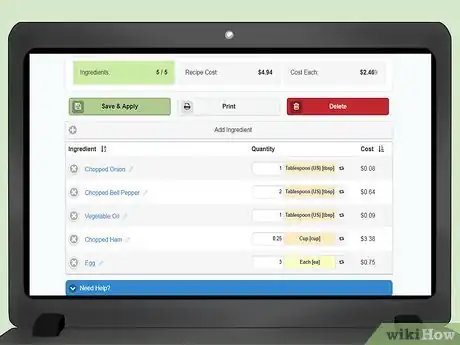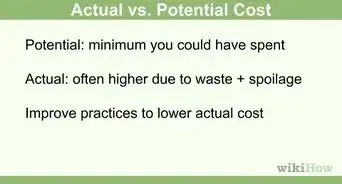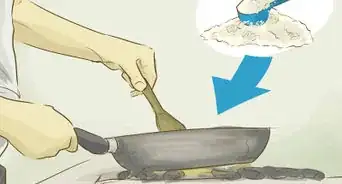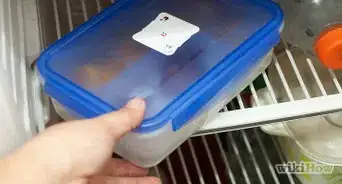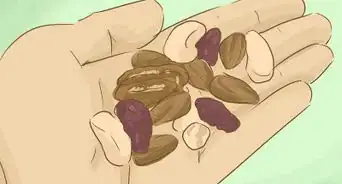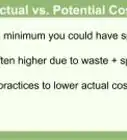This article was co-authored by Ollie George Cigliano. Ollie George Cigliano is a Private Chef, Food Educator, and Owner of Ollie George Cooks, based in Long Beach, California. With over 20 years of experience, she specializes in utilizing fresh, fun ingredients and mixing traditional and innovative cooking techniques. Ollie George holds a BA in Comparative Literature from The University of California, Berkeley, and a Nutrition and Healthy Living Certificate from eCornell University.
This article has been viewed 393,539 times.
Whether you are starting a food service business or creating a family budget, it is important to know how much a meal costs. But with so many ingredients in a recipe, it can be difficult to determine the true cost of a recipe per serving. This article will tell you how to determine the cost per serving of a recipe in ten easy steps.
Steps
Calculating Manually
-
1Create an ingredients list with the quantity required for each. If you have an online version of a recipe, or if you created the recipe yourself in the kitchen, write out the ingredients list. Next to each ingredient include how much is required.[1]
- If you have a printed copy of the recipe, then this step is already done for you!
-
2Write down the price of any full units of ingredients that you are using. For ingredients that you are using the full amount that you purchased for the recipe, then you don’t need to calculate anything just yet. Put the amount that it cost next to it on the ingredients list that you wrote.[2]
- For example, if you are using a full tin of diced tomatoes, or one whole avocado, then you can put the purchase price directly next to the item on the ingredients list.
- Use your receipts or grocery store websites to find the price for each item.
Advertisement -
3Convert the measurement units to those that are used by the recipe. If the recipe uses a different unit of measurement than that stated on the packaging, then use a search engine to convert the packing unit to that stated on the ingredients list. For example, if an ingredient states 4 oz (113 g) of diced tomatoes, and the can was measured in grams, then use a search engine to convert the weight of the tomatoes in the can to ounces first.[3]
- Common conversions include 3 tsp = 1 Tbsp.
- 4 Tbsp = ¼ cup.
- 2 Tbsp = ounce (volume).
- 16 Tbsp = 1 cup.
-
4Divide the required amount by the full unit amount for partial ingredients. Most of your ingredients on your list will only be one part of the full unit that you purchased. To calculate the cost, divide the amount that the recipe requires by the full amount that is in the unit that you purchased. This gives you the proportion of the full unit that you will use for the recipe.[4]
- Some recipes will call for specific amounts, such as 500 g (1.1 lb) of mince. This makes calculating how much you use easy, because if you bought a 1000 g (2.2 lb) pack it would be 500 / 1000, which works out to be 0.5.
- For recipes that don’t specify a numerical quantity, and instead say a handful, a pinch, or a sprinkle, weigh out the amount that you plan to use. Then you can do the calculation. For example, if you needed two handfuls of spinach, place two handfuls on a set of kitchen scales, and record the weight. If the spinach that is required weighs 100 g (3.5 oz), and you purchased a 300 g (10.6 oz) bag, then you calculation would be 100 / 300, which is 0.3.
-
5Multiply the proportion of partial ingredients by the full purchase cost. Use the numbers that you just calculated for each partial ingredient to work out the cost of using each one in your recipe. For example, if your proportion of spinach is 0.3, and you bought a bag for $2.00, you calculation would be 0.3 x 2, which equals 0.6. This means that the cost for the spinach that you are using in your recipe would be $0.60.[5]
- For the mince example, the proportion that you calculated was required for your recipe is 0.5. This means that if the full unit of mince cost $10.00, the amount that is used for the recipe cost $5.00.
- Write down each cost that you calculated next to the ingredient on the list.
-
6Add all of the calculated prices for the ingredients together. You can do the calculation in your head if you just have a few ingredients, or otherwise you can use a calculator, spreadsheet or the internet to do the same thing. The final result will give you the total cost of the recipe.[6]
- If your ingredients list is long, you might want to double check your end total by calculating it again, to make sure it is accurate.
-
7Divide the total recipe cost by the number of servings. This will give you the recipe cost per serving. For example, if your calculations show that a recipe costs $12.00 to make, and it makes 4 servings, 12 / 4 = 3, which means that the recipe costs $3.00 per serving.[7]
Using Online Tools
-
1Create an account with a website or app that does recipe costing. There are numerous websites and apps available that calculate the cost of recipes for you. Many of these are free, but there are paid upgrades available, which may be particularly helpful if you are a in a food business.
- You will need to include your name, email address, and company name if you have one.
-
2Add the ingredients for the recipe and the units of measurement. Include all of the ingredients that are required for your recipe. You can use any units of measurement, and don’t need to worry about converting them yourself.
- The website or app will calculate the conversions for you.
-
3Insert the purchase price for each ingredient. Regardless of whether you are using all or only some of the full unit that you purchased, the website or app will calculate the price of the amount that you used. You will be guided through the process, as this software is very user-friendly.
-
4See the total cost once you have included all of the prices. The system will divide, multiply, and sum all of the ingredients and costs for you. You will be given an end total which tells you how much the recipe costs to make, both fully and per serving.
- Some websites and apps will also be able to calculate your profit if you are part of a food business.
- Calculating the labour cost for each recipe is also an option if you prefer.
Community Q&A
-
QuestionHow do I calculate 21.5% food cost on a dinner at $30?
 Community AnswerUse this formula: 30 x 21.5 / 100 = $6.45.
Community AnswerUse this formula: 30 x 21.5 / 100 = $6.45. -
QuestionHow do I calculate indirect costs for baking three dozen cookies?
 Community AnswerMake a list of all your ingredients. Always count the number of cookies said recipes make. When you have done this, go online or consult fliers and just calculate the cost of all you will need.
Community AnswerMake a list of all your ingredients. Always count the number of cookies said recipes make. When you have done this, go online or consult fliers and just calculate the cost of all you will need. -
QuestionCost the seafood recipes?
 Kaitlyn WislangCommunity AnswerFollow the same process of getting the ingredients and quantities list, calculating the cost of each ingredient, and summing them together.
Kaitlyn WislangCommunity AnswerFollow the same process of getting the ingredients and quantities list, calculating the cost of each ingredient, and summing them together.
Things You’ll Need
- Recipe on paper
- Pen
- Calculator
- Receipts
Expert Interview
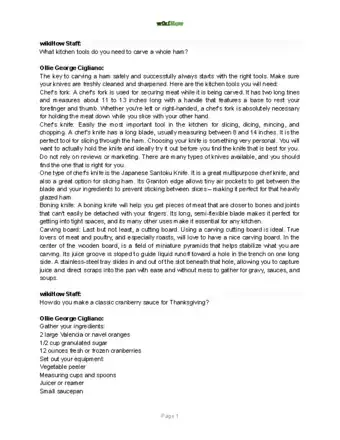
Thanks for reading our article! If you'd like to learn more about doing recipes, check out our in-depth interview with Ollie George Cigliano.
References
- ↑ https://www.budgetbytes.com/how-to-calculate-recipe-costs/
- ↑ https://www.budgetbytes.com/how-to-calculate-recipe-costs/
- ↑ https://www.budgetbytes.com/how-to-calculate-recipe-costs/
- ↑ https://www.budgetbytes.com/how-to-calculate-recipe-costs/
- ↑ https://www.budgetbytes.com/how-to-calculate-recipe-costs/
- ↑ https://www.budgetbytes.com/how-to-calculate-recipe-costs/
- ↑ https://www.budgetbytes.com/how-to-calculate-recipe-costs/
About This Article
To cost a recipe, start by creating an ingredients list and note the quantity required for each item. Next, write down the price of any full units of ingredients that you're using. For partial ingredients, convert the measurement units to those used by the recipe and divide the required amount by the full unit amount. Then, multiply the proportion of partial ingredients by the full purchase cost. Finally, add all of the ingredient prices together to calculate the total cost of the recipe. For tips on calculating the cost per serving, read on!
